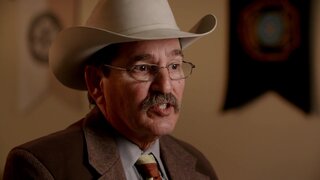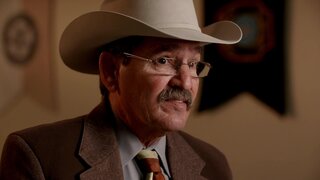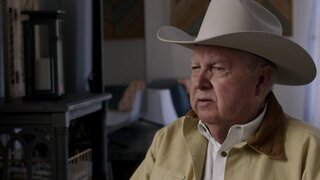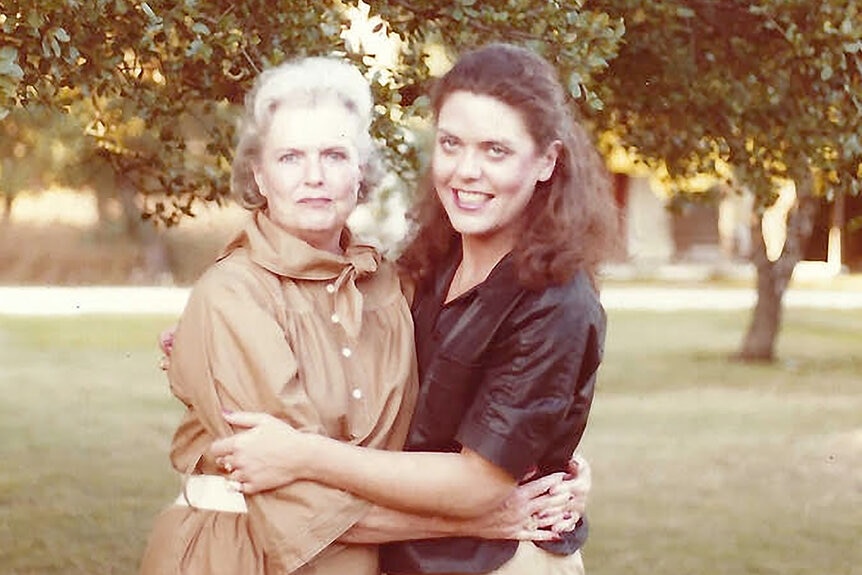Create a free profile to get unlimited access to exclusive videos, breaking news, sweepstakes, and more!
What Led To A ‘Gruesome’ Texas Triple Murder? A Nursing Aide's Shocking Confession
A single fingerprint, tire tracks, and game-changing tips help Investigators piece together who killed the Kenney family in Texas.
The central Texas city of Kerrville is known for its charm and safety — but that reputation was temporarily shattered on March 30, 1992, with the discovery of a brutal triple murder.
“We started to do a walk-through of the crime scene. It was by far one of the most gruesome scenes I’d seen,” Rusty Hierholzer, a retired Kerr Co. Sheriff, told “Family Massacre,” streaming on Oxygen.
The victims, who’d been beaten and stabbed, were Clayton Kenney, 83, a retired businessman, his partially paralyzed wife and 75-year-old retired teacher, Julianna Kenney, and her daughter, Adrienne Arnot, 44, who left her real estate career in Houston to help care for her mom.
It appeared that the murders took place as the family was having dinner. A bloody knife lay on a foyer table. Julianna “had a spoon still in her hand,” said Hierholzer. “And she was just sitting there. Her throat had been cut and her head bashed in all the way down to the bridge of her nose.”
While there were no indications of forced entry, there were signs that the home had been ransacked. Contents of a purse littered the floor. There were bloody tracks on the carpet, and car tracks outside the house suggested where the killers had parked.
Near the automobile marks, detectives found a pair of gloves, a silver spoon, and a yard-long thick cedar stick with blood and hair on it. Investigators later learned from the housekeeper that a rare spoon collection was missing, as were other decorative items.
The savagery of the murders struck investigators as overkill, said Joe Davis, former investigator with the Texas Rangers. They looked into the possibility of a grudge murder and considered a nurse’s aide with a criminal record. He had had a dispute with the Kenneys and was fired for allegedly being abusive.
After a thorough and complicated investigation that included a polygraph test and sorting through unreliable testimony by his girlfriend, the aide was eventually cleared as a suspect.
Investigators then considered a different motive for the murders: Financial gain. They learned that Clayton’s son, who lived in Georgia, was in line to inherit the entire Kenney estate. The son’s alibi — he was out of state during the crime — and a passed polygraph test helped clear him as a suspect.
When investigators turned their attention to an ex-boyfriend of Adrienne's, they appeared to be gaining some traction. But ultimately he was found to have a solid alibi that cleared him from suspicion.
Back at square one, investigators searched for possible leads at the Kenney funeral. During the service, officers in the parking lot looked for tire tracks on parked cars to see if there was a match for ones left behind at the crime scene. Officers didn’t come up with a match.
Three weeks into the case, detectives got what they considered to be a big break when a fingerprint was found on the cedar club discovered at the crime scene. The print was found to not be a match to any of the previously considered suspects, and the case went cold for several months.
Around the anniversary of the murders, Kerrville investigators reached out to San Antonio’s Crime Stoppers program for help from the public for tips. Two calls came in and they both mentioned the same person: James John Steiner, who was at Kerrville State Hospital seeking drug and mental health treatment.
"He admitted to one of the employees that he killed three people at the Kenney home,” said Davis.
Investigators interviewed Steiner’s sister. She informed them of her brother’s battle with substances and history of violent acts. She also said that Steiner was living in Kerrville at the time of the slayings with Samuel Clark Gallamore, a construction worker.
Officials found that Steiner had worked at a nursing home where Julianna Kenney was a patient, establishing a link between the victims and the possible suspects. A year before the murders, Clayton hired Steiner to care for his wife one weekend at their home.
Steiner’s sister also told officials that her brother used her car. Investigators found that treads on the tires matched the marks left at the crime scene.
Officials next turned their focus to Gallamore. “I knew Sam Gallamore since he was probably about 8 or 9 years old,” said Hierholzer, adding that he had a reputation as a petty criminal. Because of his scrapes with the law, Gallamore’s prints were on file. The print on the cedar club matched his left index finger.
When detectives went to Gallamore’s workplace he said he knew why they were there. “We arrested him without any incident,” said Hierholzer. “I think he was tired or livid with what he had done.” After being given his rights, he gave a “very detailed, total confession.”
Gallamore told authorities that he and Steiner were “shooting crank.” When they ran out and needed money to get their next fix, they headed to the Kenney home. “They decided that if they got in their way, they were going to kill them.”
Gallamore said that he buried the silver collection and other items on his parents’ property. He took officials there and showed them where to dig them up. Investigators learned that the night of the murder, the killers got away with $25 and used it to buy pot. “I said, ‘So you killed three people for a baggie of marijuana,’” said Hierholzer.
Gallamore was convicted and sentenced to death. On January 14, 2003, he was executed by lethal injection at the Texas State Penitentiary at Huntsville.
"I would like to apologize and say I'm sorry but words seem so hollow and cheap," Gallamore, 31, said in a handwritten statement distributed after his execution. “Their death should not have happened, but it did. I'm so sorry that all of this took place.”
Steiner was given a life sentence. He is eligible for parole in 2029.
To learn more about the case, watch “Family Massacre,” streaming now on Oxygen.com.

































